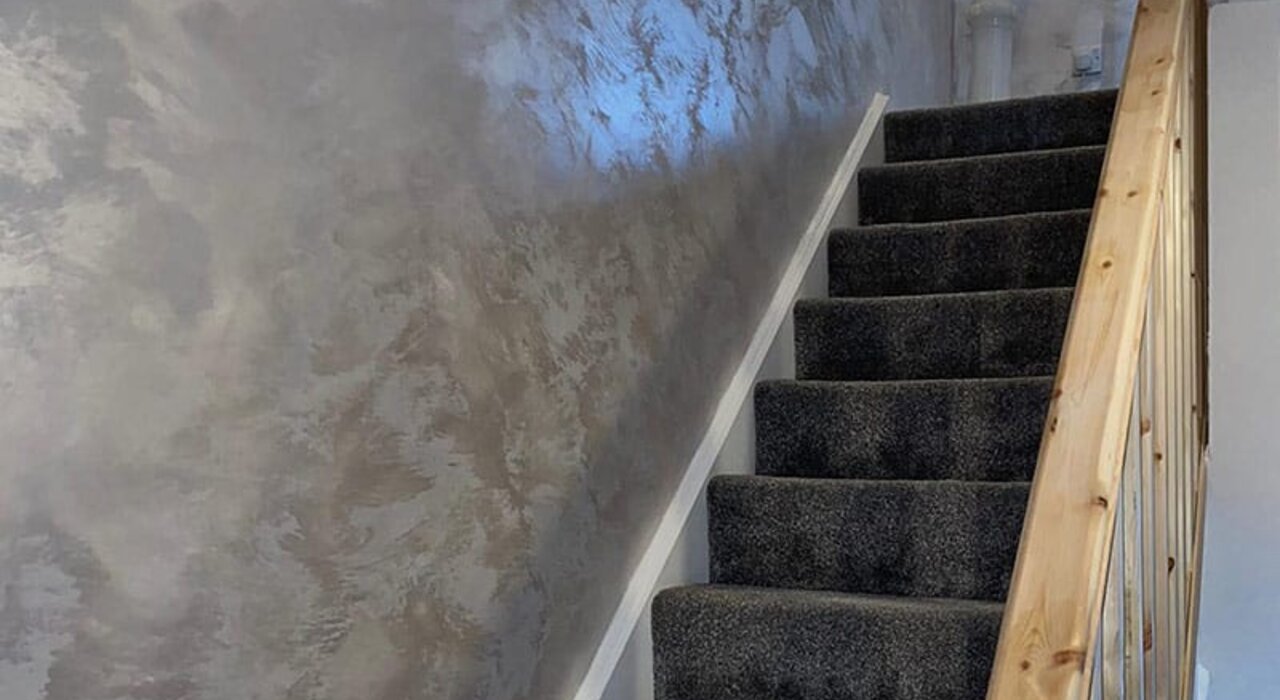
In its most basic form, plaster is a protective and decorative coating for walls and ceilings, bridging the gap between structural necessities and aesthetic desires. Its use in construction dates back thousands of years, with early examples found in ancient civilizations across the globe. These ancient plasters were primarily made from lime, sand, and water, applied over laths or directly onto stone walls to create smoother painting surfaces or improve thermal insulation and soundproofing. As we evolved, so did our use of plaster, transitioning from these early formulations to more sophisticated mixes and application techniques designed to enhance durability, finish, and decorative appeal. Among the myriad types of plaster that have been developed, traditional and Venetian plasters stand out for their unique characteristics and the distinct visual effects they can achieve.
Traditional plaster
Traditional plaster has had a place in construction for thousands of years. Its purpose has changed very little throughout time; the primary function of traditional plaster is to protect and smooth over the raw, uneven surfaces of walls and ceilings. Depending on preference, the plaster application creates a solid, paintable, or decorative finish. Lime or gypsum, mixed with sand and water, constitute the primary ingredient in traditional plasters. Lime plaster, one of the oldest types of traditional plaster, is made from a mixture of lime (calcium hydroxide), sand, and water. Upon exposure to air, lime plaster slowly carbonates, reverting to limestone, which gives it a durable and hard finish. This slow drying process and its ability to allow moisture to evaporate from the surface make lime plaster particularly suitable for older buildings, which are more prone to movement and moisture issues. Its breathability promotes healthier indoor air quality by regulating humidity levels, making it an eco-friendly choice for sustainable building practices. On the other hand, gypsum plaster is a more modern invention favoured for its faster drying time and smooth finish. Composed of calcium sulfate dihydrate, gypsum plaster sets quickly when mixed with water, making it an efficient choice for new constructions and renovations. Its ease of application and ability to create a uniform, crack-free surface have made it a staple in the construction industry, particularly for interior walls and ceilings where moisture is less of a concern.
Application of traditional plaster
Plaster requires a certain level of patience and skill as it is broken down into several stages. The initial stage is the mixing of material. Ensuring that the correct proportion of water is incorporated into the dry mix is crucial. Applying a base coat or "scratch" layer is followed by one or more finish coats that are meticulously smoothed and levelled. Each layer must be allowed to dry completely before the next is applied. The drying and curing process can take a few days to several weeks, depending on the type of plaster, ambient conditions, and thickness of the application.
Venetian plaster
Venetian plaster, unsurprisingly, gained popularity during the Renaissance, particularly in Venetian palaces. The decorative finish marries well with an appearance of opulence. This is achieved through meticulous plaster layering to create a smooth surface. The resultant surface provides the appearance of depth and texture. At its heart, Venetian plaster consists of lime putty mixed with finely ground marble dust, tinted with natural pigments to achieve a wide spectrum of colours. Including marble dust is crucial, as it lends the plaster its distinctive luminous quality and silky texture. When applied, the plaster undergoes a chemical reaction due to the carbonation of lime, which converts back into limestone, much like lime plaster. This transformation imparts a hard, durable finish to the plaster, capable of withstanding the test of time. Plasterers apply the plaster in thin, overlapping layers with a trowel, gradually building up the surface while adding depth and interest. Between each layer, the plaster must dry slightly before being burned with a stainless steel trowel. This burnishing process compresses the material, enhancing its natural sheen and revealing the marble's reflective qualities. The final result is a highly polished finish with a solid marble appearance and feel.
Aesthetic versatility
Venetian plaster mimics the appearance of natural stone, such as marble or travertine. The technique allows for a remarkable range of effects, from the highly polished, mirror-like finish to a more subdued, satiny sheen. The choice of finish can dramatically affect the ambience of a space, making Venetian plaster an incredibly versatile decorative option. Moreover, the colour possibilities with Venetian plaster are virtually limitless, thanks to natural or synthetic pigments. This enables the creation of walls that match the interior design palette, contributing to a cohesive and harmonious aesthetic. Additionally, because the colour runs through the entire depth of the plaster, scratches or marks can be easily burnished away, making it a practical choice for high-traffic areas.
Key differences between traditional and Venetian plaster
The major distinction between traditional and Venetian plaster is the aesthetics. Traditional plaster offers a matte finish and a tactile texture, making it suitable for subsequent painting and finishing. Venetian plaster, on the other hand, offers a glossy finish due to the marble dust additives. This finish can also be buffed and polished to mimic the appearance of marble. Both types of plaster require a certain amount of skill. However, Venetian plaster is considered an artisanal finish, requiring more experienced handling. The layering must reflect depth accurately and mimic the marble's texture, which requires the plasterer to be more skilled. Both plasters are durable, but their maintenance requirements differ. Traditional plaster is robust and easy to repair but may require repainting over time. Venetian plaster is more resilient to scratches and has a sealed surface, which makes it easier to clean and less prone to damage. However, repairing it can be more challenging.
